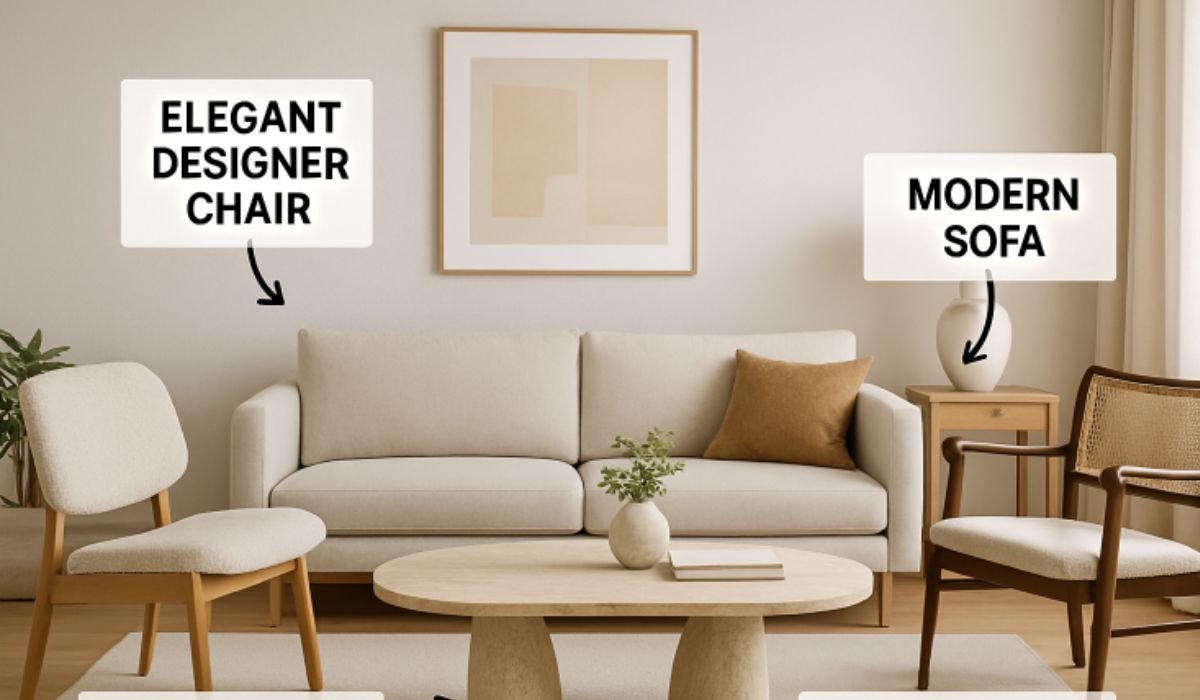Key Takeaways
- Always measure your space accurately before shopping for new furniture.
- Set a realistic budget to balance quality and cost.
- Prioritize material quality and craftsmanship for long-term value.
- Test comfort and functionality before making a final purchase.
- Choose pieces that fit your lifestyle and daily needs.
- Blend different styles for a more personalized space, and take advantage of sales or secondhand finds.
- Understand retailer policies for returns and warranties.
Table of Contents
- Measure Your Space Accurately
- Set a Realistic Budget
- Research Materials and Craftsmanship
- Test for Comfort and Functionality
- Consider Your Lifestyle
- Mix and Match Styles
- Shop During Sales and Explore Secondhand Options
- Understand Return Policies and Warranties
Choosing the right designer furniture is an exciting opportunity to transform your living space, but it’s easy to be overwhelmed by the range of options available. By following a structured approach, you can make informed investments that enhance both the aesthetic appeal and functionality of your home. If you’re seeking premium designer furniture collections in Salt Lake City, knowing what to prioritize will help you build a space you love for years to come.
Understanding the basics of what makes quality designer furniture is the first step in making an informed purchase. Taking time to evaluate your needs, preferences, and constraints ensures that every piece you choose reflects your unique taste and lifestyle. With the proper knowledge, you’ll make decisions that stand the test of time, both in durability and style.
Designer furniture not only elevates your home’s aesthetic but also serves as an investment in comfort and utility. Whether you’re updating a single room or revamping your entire home, having a strategy will help you avoid common pitfalls and make the most of your purchase.
These practical tips are suitable for all homeowners, from first-time buyers to seasoned collectors, ensuring you never compromise on quality or design when refreshing your interiors.
Measure Your Space Accurately
One of the most common mistakes buyers make is underestimating the importance of precise measurements. Before getting attached to a particular piece, measure your room thoroughly and record all dimensions, including entryways and hallways through which the furniture must pass. An effective way to visualize a piece’s footprint is to outline its dimensions with painter’s tape directly on the floor. This allows you to assess how the item will fit with other furnishings and flow within the room. According to Architectural Digest, accurate measurements help prevent costly returns and ensure your chosen furniture enhances, rather than overwhelms, your space.
Set a Realistic Budget
Designer furniture can represent a significant investment, so it’s essential to set a realistic budget before you start shopping. Determine how much you’re willing to spend, keeping in mind that higher-quality pieces are typically more costly but will offer better longevity. Prioritize budget allocation for frequently used items, such as sofas and dining tables. One way to achieve a high-end look while keeping costs down is to mix statement designer pieces with more affordable finds. This balanced approach ensures you enjoy quality without overspending, as suggested by experts featured in House Beautiful.
Research Materials and Craftsmanship
Material quality and craftsmanship are pivotal when purchasing designer furniture. Ask questions about the types of materials used, such as solid hardwood versus engineered woods, or the type of fabric or leather. Well-constructed furniture will withstand daily use and retain its beauty over time. For sofas, sturdy frames and eight-way hand-tied springs signal higher quality, while tables and chairs made from solid woods tend to be more durable. Understanding construction details helps you identify pieces that are built to last, safeguarding your investment.
Test for Comfort and Functionality
Comfort and function are often as important as design, if not more so. Take the time to test each potential purchase in person when possible. Sit on sofas and armchairs, try out mechanisms on recliners, and check the sturdiness of extendable tables or modular pieces. Make sure the height and depth suit your needs and that you can relax comfortably. Stylish furnishings lose their appeal quickly if they do not serve your practical needs.
Consider Your Lifestyle
The best designer furnishings will suit your day-to-day life. If you have pets or young children, opt for durable, stain-resistant fabrics or leathers that are easy to clean and resistant to scratches. Some designer brands offer furniture lines tailored explicitly for active households, combining resilience with luxury. Consider how each piece will be used—is it for a busy family room, or a formal sitting area? Choosing furniture that matches your lifestyle ensures it remains beautiful and functional over time.
Mix and Match Styles
Avoid buying matching furniture sets, which can create a uniform but uninspired look. Instead, embrace mixing different styles, colors, and textures to achieve a more curated and engaging space. Combine modern seating with a vintage coffee table, or pair a statement designer lamp with an understated, contemporary sofa. This approach highlights individual pieces while bringing depth and character to your home. Sources like Real Simple recommend mix-and-match styling for creating a signature interior.
Shop During Sales and Explore Secondhand Options
Shopping smart can lead to substantial savings on designer pieces. Keep an eye on major sales events, such as end-of-season or holiday promotions, to take advantage of lower prices. In addition, consider exploring secondhand options through consignment shops, estate sales, or reputable online marketplaces. High-quality designer furniture can be found gently used for a fraction of the retail price, making it a sustainable and budget-friendly choice. These methods also help reduce waste by giving pre-loved furniture a second life.
Understand Return Policies and Warranties
Finally, constantly review the retailer’s return and warranty policies before finalizing a purchase. A clear understanding of these policies protects you in case the furniture doesn’t meet expectations or has manufacturing defects. A comprehensive warranty will cover major structural issues, ensuring your investment is safeguarded. Retailers with flexible return policies offer additional peace of mind, making it easier to shop confidently.
Thoughtful preparation and careful selection are key when investing in designer furniture. With these tips, you can enjoy pieces that not only look stunning but also deliver daily comfort and remain lasting additions to your home. Whether you’re shopping local or exploring global brands, informed choices ensure that every addition to your space truly enhances your lifestyle—and your home.
YOU MAY ALSO LIKE: Innovative Design Strategies for Small Bathrooms

